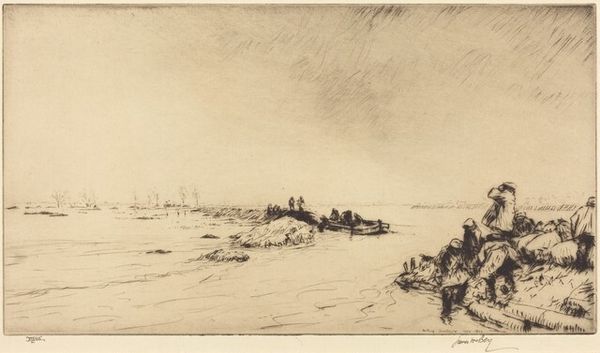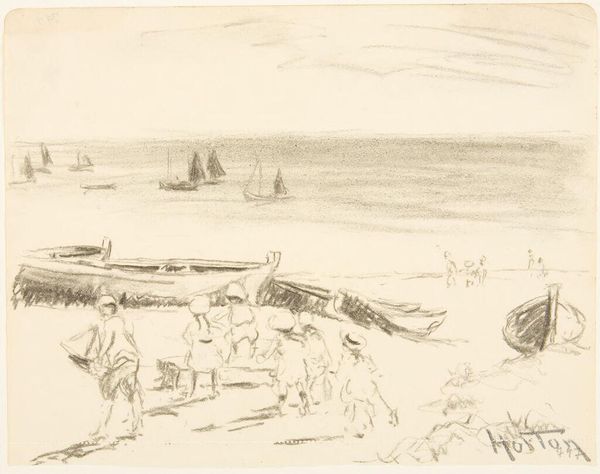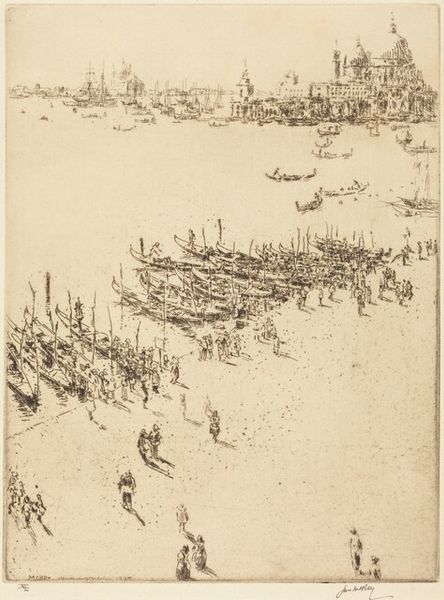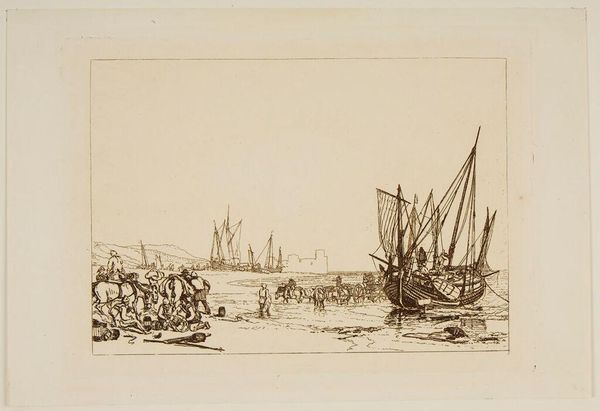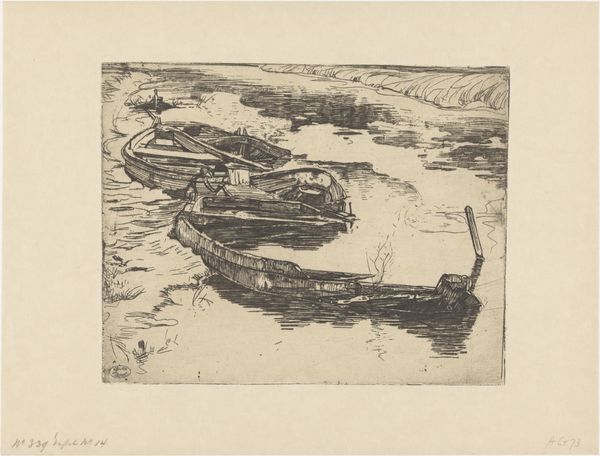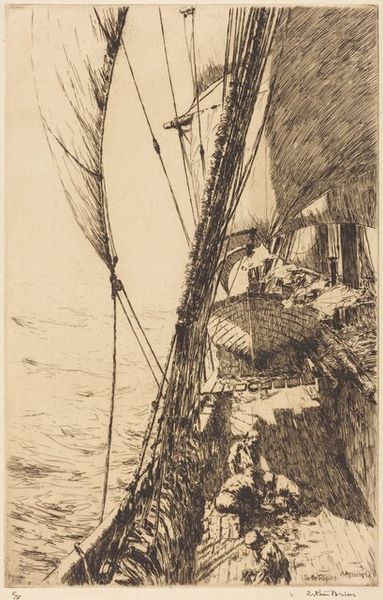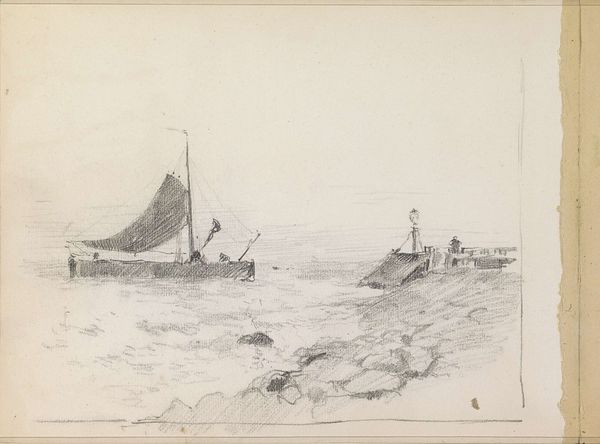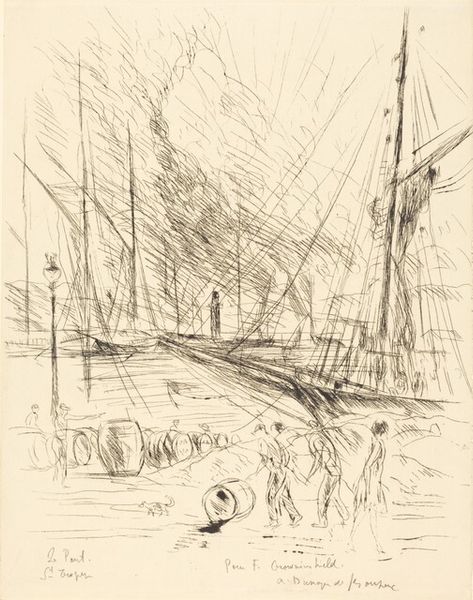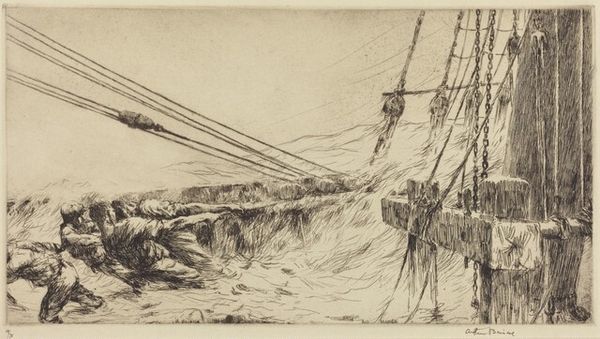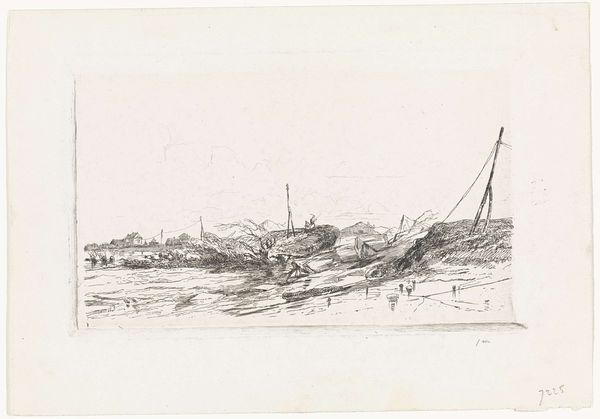
drawing, print, etching, graphite, engraving
#
drawing
# print
#
etching
#
landscape
#
graphite
#
engraving
#
realism
Copyright: National Gallery of Art: CC0 1.0
Curator: This is "Gale at Port Erroll," an etching by James McBey, created around 1922 or 1923. Editor: It evokes a certain desolation, doesn’t it? The washed-out palette, the splintered lines... the skeletal remains of vessels aground on that exposed sandbank. Curator: The atmospheric perspective, achieved through the varying densities of line work, is indeed powerful. Notice how McBey uses close hatching in the foreground to define the wrecked ships and scattered figures, gradually lightening towards the horizon to create a sense of vastness. Editor: It speaks to the unforgiving power of the sea, certainly. I wonder what societal narratives were at play; what historical and socio-economic circumstances affected a community so exposed to maritime misfortune. What policies, or lack thereof, condemned its people to so precarious an existence? Curator: I’m intrigued by the dynamic interplay between realism and impressionism here. While the scene is rendered with considerable detail – we can almost feel the grit of the sand and the chill of the spray – the overall effect is far from photographic. McBey distills the essence of the experience to the mere gesture. Editor: Absolutely, the "gesture" as you put it, points at a key shift away from the celebration of an industrial, modernised society, and reveals a glimpse of ecological vulnerability: that modern interventions, like fishing, extraction or ports, don't shield societies from nature, so much as make them susceptible to it. Curator: An astute observation! The composition also directs our eye toward the implied narrative unfolding amongst those distant figures atop the ship. It's that tension between meticulous detailing and loose suggestion, that creates its lasting resonance. Editor: Ultimately, it highlights the perpetual struggle of communities co-existing with natural forces, making tangible our shared and exposed human condition. Curator: Precisely. McBey, through formal means of light, line, and space, articulates more profound, universally understood states of precarity. Editor: And in considering McBey's work within that historical context, it really sheds light on the vital human stakes entangled in representing the environment and coastal living in art.
Comments
No comments
Be the first to comment and join the conversation on the ultimate creative platform.
